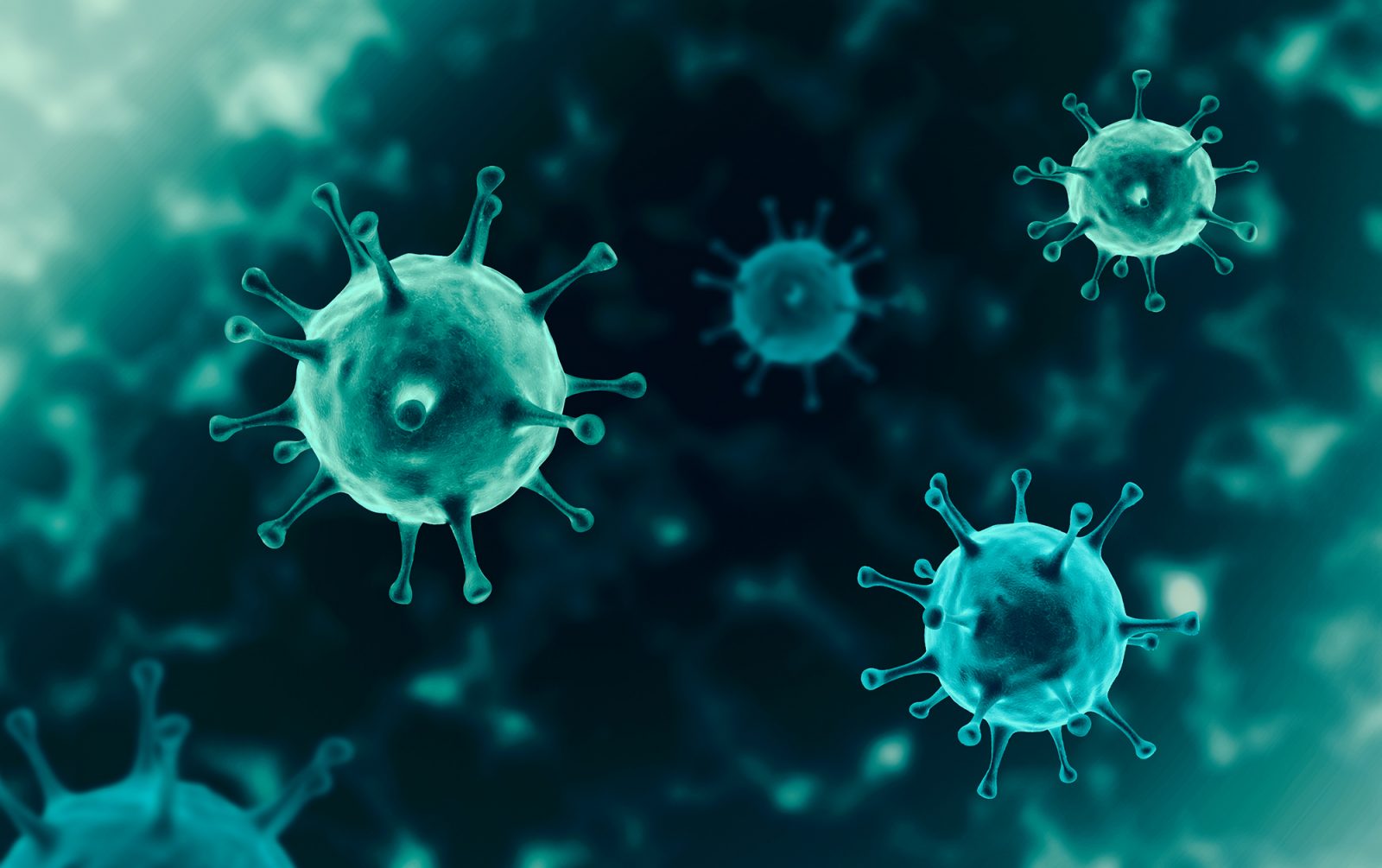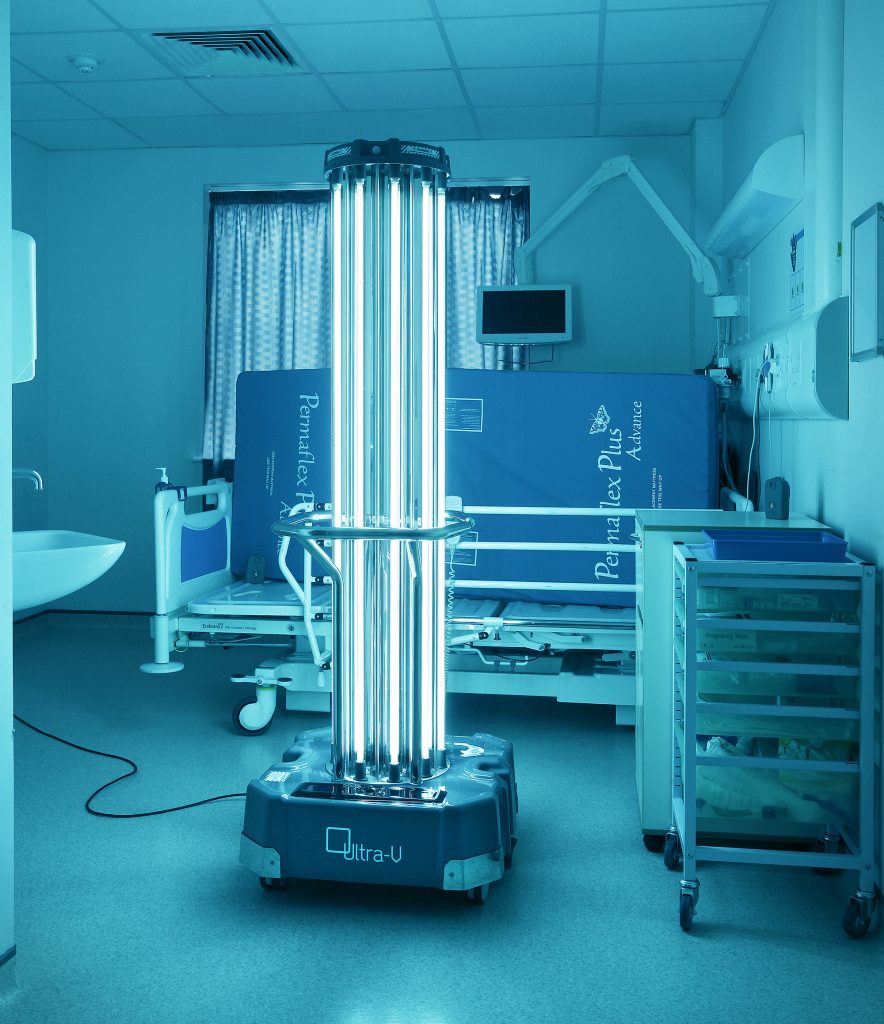
Welcome back to the 1st edition of the Inivos academic digest for 2021, where our team shares the most interesting and thought-provoking research across microbiology, personal protective equipment (PPE) and infection prevention and control.
Over January, there has been more research being focused on the stability and persistence of SARS-CoV-2 on medical equipment and other surfaces, with papers published in the Journal of Intensive Care and the Scientific Reports journal emphasising the ability of the virus to remain infective on different materials.
The next challenge will be evaluating efficacy of UV-C light and other interventions for PPE decontamination and the inactivation of SARS-CoV-2 and other harmful pathogens. Papers published in Applied Biosafety, Nature Public Health Emergency Collection and PLoS One journals.
SARS-CoV-2 stability, infectivity and persistence
A descriptive study in the Journal of Intensive Care1, provided in-depth analysis of community- and hospital-acquired viral, bacterial, and fungal infections among 162 patients hospitalised with COVID-19 pneumonia at University Hospital Basel, Switzerland. Of the 162 hospitalised patients with COVID-19, a total of 31 infections were diagnosed including five viral co-infections, twenty-four bacterial infections, and three fungal infections. They observed a high frequency of secondary infections among hospitalised SARS-CoV-2-positive patients requiring intensive care unit (ICU) admission, which complicated the already challenging clinical management of the patients.
One in vitro study in the Scientific Reports2 journal provided the first comprehensive assessment of SARS-CoV-2 stability on experimentally contaminated PPE including gloves, N95 and N100 masks, plastic, cotton and stainless steel. The researchers found that viable SARS-CoV-2 in the presence of a soil load persisted for up to 21 days on experimentally inoculated PPE, including materials from filtering facepiece respirators (N-95 and N-100 masks) and a plastic visor. Conversely, when applied to 100% cotton fabric, the virus underwent rapid degradation and became undetectable by TCID50 assay within 24 h.
A study in Antimicrobial Resistance and Infection Control journal3 investigated the burden of pathogenic bacteria and SARS-CoV-2 RNA on different devices and surfaces, after terminal cleaning measures in two specialised ICUs of a tertiary care hospital exclusively treating fifty-three COVID-19 patients. A total of 176 swabs were sampled and no SARS-CoV-2 (RNA) was detected using rtPCR. However, gram-negative bacterial contamination was mainly linked to sinks and siphons and enterococcus faecium was detected on two keyboards.
One paper in the Science of Total Environment4 journal reviewed the available data on the non-droplet routes of the spread of SARS-CoV-2 and other coronaviruses. The researchers stated that SARS-CoV-2 (aerosol) retained infectivity for up to 16 hours at room temperature. Coronaviruses and other viruses (including Influenza) can survive on both non-porous and porous surfaces, such as metals, fabrics, fibres (disposable handkerchiefs, handkerchiefs, cotton, polyester), plastics (light switches, telephones, latex, rubber and polystyrene), paper (also magazines, banknotes), wood, glass or eggs, feathers and soft toys. However, coronaviruses survive for a shorter period on copper, nickel, and brass than on stainless steel and zinc surfaces.

PPE decontamination
One review in the Applied Biosafety5 Journal summarised the literature for the efficacy of UV-C light to inactivate SARS-CoV-2 on N95 masks. The authors found that UV-C exposure of >1.0 J/cm2 inactivates SARS-CoV-2 analogues (>3 log reduction) on the majority of tested N95 models. However, viral inactivation was affected by the N95 model type and presence of shadowing. Also, higher doses may be necessary to inactivate other pathogens such as bacterial spores. Although N95 fit and integrity appear to be preserved for 10–20 cycles of 1.0 J/cm2, donning and doffing may degrade fit to unacceptable levels within fewer cycles.
Correspondingly, one paper in PLoS One6 reported that UV-C light can deliver germicidal efficacy on porous, non-planar N95 respirators when all surfaces receive ≥1.0 J/cm2 dose. However, their results showed that 1.0 J/cm2 delivered to the apex of the central N95 in this system would result in only 0.06 J/cm2 applied to the side of an N95 placed in the periphery of the treatment plane.

UV-C light efficacy
One study in the Multidisciplinary Digital Publishing Institute7 examined the microbiocidal activity of a UV-C light device at 185-256nm irradiance and another device at 185nm (which would generate ozone gas). Both devices showed significant deactivation after one hour (>log4) against selected microorganisms such as E.coli, M.luteus, B.subtilis and others. However the second device with ozone had slightly more disinfection power, which could be due to using a power output of 450W compared to 40W for the first device.
A review in the Nature Public Health Emergency Collection8 journal evaluated alternative disinfection strategies to control the spread of SARS-CoV-2. Authors found that studies conducted with UV-C indicate that a dose ranging from 3.7 mJ/cm2 to 10.6 mJ/cm2 should inactivate the SARS-CoV-2 and its surrogates in 5 min. The application of UV light as standalone treatment or in combination with oxidants would increase the chance of thorough surface disinfection.
The findings correspond with Inivos’ Ultra-V technology, which emits UV-C light rays specifically at a 254 nm wavelength to decontaminate spaces and surfaces effectively and efficiently without influencing safety measures. This is because UV-C light is the most effective and yet safest UV technology to decontaminate different settings without possessing a risk on individuals.
Download this digest
Download the January Academic Digest-
Sogaard et al. (2021). Community-acquired and hospital-acquired respiratory tract infection and bloodstream infection in patients hospitalized with COVID-19 pneumonia. Journal of Intensive Care. 9(10). doi: 10.1186/s40560-021-00526-y
-
Kasloff, S. B., Leung, A., Strong, J. E., Funk, D., & Cutts, T. (2021). Stability of SARS-CoV-2 on critical personal protective equipment. Scientific reports, 11(1), 984. https://doi.org/10.1038/s41598-020-80098-3
-
Hofmaenner et al. (2021). Bacterial but no SARS-CoV-2 contamination after terminal disinfection of tertiary care intensive care units treating COVID-19 patients. Antimicrob Resist Infect Control. 10:11. doi: 10.1186/s13756-021-00885-z
-
Wiktorczyk-Kapischke, N., Grudlewska-Buda, K., Wałecka-Zacharska, E., Kwiecińska-Piróg, J., Radtke, L., Gospodarek-Komkowska, E., & Skowron, K. (2021). SARS-CoV-2 in the environment-Non-droplet spreading routes. The Science of the total environment, 770, 145260. Advance online publication. https://doi.org/10.1016/j.scitotenv.2021.145260
-
Grist et al. (2021). Current Understanding of Ultraviolet-C Decontamination of N95 Filtering Facepiece Respirators. Applied Biosafety. https://doi.org/10.1089/apb.20.0051
-
Su, A., Grist, S. M., Geldert, A., Gopal, A., & Herr, A. E. (2021). Quantitative UV-C dose validation with photochromic indicators for informed N95 emergency decontamination. PloS one, 16(1), e0243554. https://doi.org/10.1371/journal.pone.0243554
-
De Alba et al. (2021). Microbiological Evaluation of the Disinfecting Potential of UV-C and UV-C Plus Ozone Generating Robots” Microorganisms9, no. 1: 172. https://doi.org/10.3390/microorganisms9010172
-
Choi, H., Chatterjee, P., Lichtfouse, E., Martel, J. A., Hwang, M., Jinadatha, C., & Sharma, V. K. (2021). Classical and alternative disinfection strategies to control the COVID-19 virus in healthcare facilities: a review. Environmental chemistry letters, 1–7. Advance online publication. https://www.ncbi.nlm.nih.gov/pmc/articles/PMC7820091/




